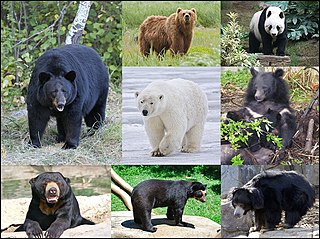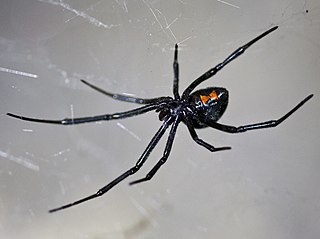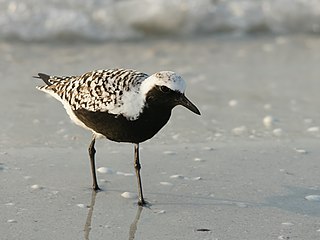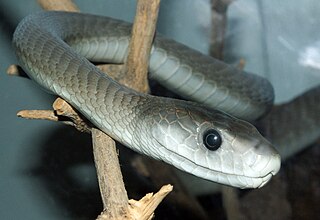
The Black Sea is a marginal mediterranean sea of the Atlantic Ocean lying between Europe and Asia; east of the Balkan Peninsula, south of the East European Plain in Eastern Europe, west of the Caucasus, and north of Anatolia in Western Asia. It is supplied by major rivers, principally the Danube, Dnieper, and Don. The watersheds of many countries drain into the sea beyond the six that share its coast.

Bears are carnivoran mammals of the family Ursidae. They are classified as caniforms, or doglike carnivorans. Although only eight species of bears are extant, they are widespread, appearing in a wide variety of habitats throughout the Northern Hemisphere and partially in the Southern Hemisphere. Bears are found on the continents of North America, South America, Europe, and Asia. Common characteristics of modern bears include large bodies with stocky legs, long snouts, small rounded ears, shaggy hair, plantigrade paws with five nonretractile claws, and short tails.

Wildebeest, also called gnu, are antelopes of the genus Connochaetes and native to Eastern and Southern Africa. They belong to the family Bovidae, which includes true antelopes, cattle, goats, sheep, and other even-toed horned ungulates. There are two species of wildebeest: the black wildebeest or white-tailed gnu, and the blue wildebeest or brindled gnu.

Eagle is the common name for many large birds of prey of the family Accipitridae. Eagles belong to several groups of genera, some of which are closely related. Most of the 60 species of eagle are from Eurasia and Africa. Outside this area, just 14 species can be found—2 in North America, 9 in Central and South America, and 3 in Australia.

Swans are birds of the family Anatidae within the genus Cygnus. The swans' closest relatives include the geese and ducks. Swans are grouped with the closely related geese in the subfamily Anserinae where they form the tribe Cygnini. Sometimes, they are considered a distinct subfamily, Cygninae. There are six living and many extinct species of swan; in addition, there is a species known as the coscoroba swan which is no longer considered one of the true swans. Swans usually mate for life, although "divorce" sometimes occurs, particularly following nesting failure, and if a mate dies, the remaining swan will take up with another. The number of eggs in each clutch ranges from three to eight.

The American black bear is a medium-sized bear endemic to North America. It is the continent's smallest and most widely distributed bear species. American black bears are omnivores, with their diets varying greatly depending on season and location. They typically live in largely forested areas, but will leave forests in search of food, and are sometimes attracted to human communities due to the immediate availability of food. Despite the name, some subspecies can be brown or even blond in coloration.

The black rat, also known as the roof rat, ship rat, or house rat, is a common long-tailed rodent of the stereotypical rat genus Rattus, in the subfamily Murinae. It likely originated in the Indian subcontinent, but is now found worldwide.

The black vulture, also known as the American black vulture, is a bird in the New World vulture family whose range extends from the northeastern United States to Peru, Central Chile and Uruguay in South America. Although a common and widespread species, it has a somewhat more restricted distribution than its compatriot, the turkey vulture, which breeds well into Canada and south to Tierra del Fuego. It is the only extant member of the genus Coragyps, which is in the family Cathartidae. Despite the similar name and appearance, this species is unrelated to the Eurasian black vulture, an Old World vulture in the family Accipitridae. It inhabits relatively open areas which provide scattered forests or shrublands. With a wingspan of 1.5 m (4.9 ft), the black vulture is a large bird though relatively small for a vulture. It has black plumage, a featherless, grayish-black head and neck, and a short, hooked beak.

A cockatoo is any of the 21 parrot species belonging to the family Cacatuidae, the only family in the superfamily Cacatuoidea. Along with the Psittacoidea and the Strigopoidea, they make up the order Psittaciformes. The family has a mainly Australasian distribution, ranging from the Philippines and the eastern Indonesian islands of Wallacea to New Guinea, the Solomon Islands and Australia.

The black-footed ferret, also known as the American polecat or prairie dog hunter, is a species of mustelid native to central North America.

The black-crowned night heron, or black-capped night heron, commonly shortened to just night heron in Eurasia, is a medium-sized heron found throughout a large part of the world, including parts of Europe, Asia, and North and South America. In Australasia it is replaced by the closely related nankeen night heron, with which it has hybridized in the area of contact.

The black-footed cat, also called the small-spotted cat, is the smallest wild cat in Africa, having a head-and-body length of 35–52 cm (14–20 in). Despite its name, only the soles of its feet are black or dark brown. With its bold small spots and stripes on the tawny fur, it is well camouflaged, especially on moonlit nights. It bears black streaks running from the corners of the eyes along the cheeks, and its banded tail has a black tip.

Latrodectus is a broadly distributed genus of spiders with several species that, together, are commonly known as true widows. This group is composed of those often loosely called black widow spiders, brown widow spiders, and similar spiders. However, such general "common names" are of limited use, as the diversity of species is much greater. A member of the family Theridiidae, this genus contains 32 species, which include several North American "black widows". Besides these, North America also has the red widow Latrodectus bishopi and the brown widow Latrodectus geometricus, which, in addition to North America, has a much wider geographic distribution. Elsewhere, others include the European black widow, the Australian redback black widow and the closely-related New Zealand katipō, several different species in Southern Africa that can be called Button spiders, and the South American black-widow spiders. Species vary widely in size. In most cases, the females are dark-coloured, but some may have lighter bodies or even reddish. Many can have red, white or brown markings on the upper-side (dorsal) of the abdomen. Some can be readily identifiable by reddish markings on the central underside (ventral) abdomen, which are often hourglass-shaped.

The lesser black-backed gull is a large gull that breeds on the Atlantic coasts of Europe. It is migratory, wintering from the British Isles south to West Africa. It is a regular winter visitor to the east coast of North America, probably from the breeding population in Iceland.

The grey plover or black-bellied plover is a medium-sized plover breeding in Arctic regions. It is a long-distance migrant, with a nearly worldwide coastal distribution when not breeding.

A rhinoceros, commonly abbreviated to rhino, is a member of any of the five extant species of odd-toed ungulates in the family Rhinocerotidae. Two of the extant species are native to Africa, and three to South and Southeast Asia.

Antipatharians, also known as black corals or thorn corals, are an order of soft deep-water corals. These corals can be recognized by their jet-black or dark brown chitin skeletons, surrounded by the polyps. Antipatharians are a cosmopolitan order, existing at nearly every location and depth, with the sole exception of brackish waters. However, they are most frequently found on continental slopes under 50 m (164 ft) deep. A black coral reproduces both sexually and asexually throughout its lifetime. Many black corals provide housing, shelter, food, and protection for other animals.

The black mamba is a species of highly venomous snake belonging to the family Elapidae. It is native to parts of sub-Saharan Africa. First formally described by Albert Günther in 1864, it is the second-longest venomous snake after the king cobra; mature specimens generally exceed 2 m and commonly grow to 3 m. Specimens of 4.3 to 4.5 m have been reported. Its skin colour varies from grey to dark brown. Juvenile black mambas tend to be paler than adults and darken with age.

A black fly or blackfly is any member of the family Simuliidae of the Culicomorpha infraorder. They are related to the Ceratopogonidae, Chironomidae, and Thaumaleidae. Over 2,200 species of black flies have been formally named, of which 15 are extinct. They are divided into two subfamilies: Parasimuliinae contains only one genus and four species; Simuliinae contains all the rest. Over 1,800 of the species belong to the genus Simulium.

The satinbirds or cnemophilines, are a family, Cnemophilidae of passerine birds which consists of four species found in the mountain forests of New Guinea. They were originally thought to be part of the birds-of-paradise family Paradisaeidae until genetic research suggested that the birds are not closely related to birds-of-paradise at all and are perhaps closer to berry peckers and longbills (Melanocharitidae). The current evidence suggests that their closest relatives may be the cuckoo-shrikes (Campephagidae).



















